Some Theoretical and Experimental Extensions Based on the Properties of the Intrinsic Transfer Matrix
Abstract
:1. Introduction
2. The Idea of an Intrinsic Transfer Matrix
3. Practical Consequences of Applying the Intrinsic Transfer Matrix Method
3.1. A New Form of Resonance Condition
3.2. Intrinsic Transfer Matrix in Case of Attenuation
3.3. Influence of the Inhomogeneity Studied by Intrinsic Transfer Matrix
- (a)
- In the case of random values of , taking into account 1877 profiles, we obtained a fitting function: ;
- (b)
- In the case of random walk values of taking into consideration 646 profiles, the fitting function is .
3.4. A Proposed Optimization Alghorithm Based on the Intrinsic Transfer Matrix
4. Conclusions
Author Contributions
Funding
Institutional Review Board Statement
Informed Consent Statement
Data Availability Statement
Conflicts of Interest
References
- Fold, D.L.; Loggins, C.D. Transmission and reflection of ultrasonic waves in layered media. J. Acoust. Soc. Am. 1977, 67, 1102–1109. [Google Scholar] [CrossRef]
- Song, B.H.; Bolton, J.S. A transfer-matrix approach for estimating the characteristic impedance and wave numbers of limp and rigid porous materials. J. Acoust. Soc. Am. 2000, 107, 1131–1152. [Google Scholar] [CrossRef]
- Khurana, P.; Lauriks, W. On imperfect interface in multilayered poroelastic structures (conference paper). In Proceedings of the Poromechanics IV-4th Biot Conference on Poromechanics, New York, NY, USA, 8–10 June 2009; pp. 830–835, ISBN 978-160595006. [Google Scholar]
- Wesolowski, Z. Wave speed in periodic elastic layers. Arch. Mech. 1991, 43, 271–282. [Google Scholar]
- Aylo, R.; Nehmetallah, G.; Li, H.; Banerjee, P.P. Multilayer Periodic and Random Metamaterial Structures: Analysis and Applications. IEEE Access 2014, 2, 437–450. [Google Scholar] [CrossRef]
- Bolton, J.S.; Yoo, T.; Olivieri, O. Measurement of normal incidence Transmission Loss and Other Acoustical Properties of Materials Placed in a Standing Wave Tube. Bruel Kjaer Tech. Rev. 2007, 1, 1–40. [Google Scholar]
- Lee, C.-M.; Xu, Y. A modified transfer matrix method for prediction of transmission loss of multilayer acoustic materials. J. Sound Vib. 2009, 326, 290–301. [Google Scholar] [CrossRef]
- Delsanto, P.; Schechter, R.; Mignogna, R. Connection machine simulation of ultrasonic wave propagation in materials III: The three-dimensional case. Wave Motion 1997, 26, 329–339. [Google Scholar] [CrossRef]
- Cretu, N.; Nita, G. Pulse propagation in finite elastic inhomogeneous media. Comput. Mater. Sci. 2004, 31, 329–336. [Google Scholar] [CrossRef]
- Nicolae, C.; Gelu, N. A simplified modal analysis based on the properties of the transfer matrix. Mech. Mater. 2013, 60, 121–128. [Google Scholar] [CrossRef]
- Verdière, K.; Panneton, R.; Elkoun, S.; Dupont, T.; LeClaire, P. Transfer matrix method applied to the parallel assembly of sound absorbing materials. J. Acoust. Soc. Am. 2013, 134, 4648–4658. [Google Scholar] [CrossRef]
- Carbajo, J.; Ramis, J.; Godinho, L.; Amado-Mendes, P. Modeling of grooved acoustic panels. Appl. Acoust. 2017, 120, 9–14. [Google Scholar] [CrossRef]
- Guo, R.; Tang, W.-B. Transfer matrix methods for sound attenuation in resonators with perforated intruding inlets. Appl. Acoust. 2017, 116, 14–23. [Google Scholar] [CrossRef]
- Mimani, A.; Munjal, M. 3-D acoustic analysis of elliptical chamber mufflers having an end-inlet and a side-outlet: An impedance matrix approach. Wave Motion 2012, 49, 271–295. [Google Scholar] [CrossRef]
- Vijayasree, N.; Munjal, M. On an Integrated Transfer Matrix method for multiply connected mufflers. J. Sound Vib. 2012, 331, 1926–1938. [Google Scholar] [CrossRef]
- Lardeau, A.; Groby, J.-P.; Romero-García, V. Broadband Transmission Loss Using the Overlap of Resonances in 3D Sonic Crystals. Crystals 2016, 6, 51. [Google Scholar] [CrossRef] [Green Version]
- Lagarrigue, C.; Groby, J.P.; Tournat, V. Sustainable sonic crystal made of resonating bamboo rods. J. Acoust. Soc. Am. 2013, 133, 247–254. [Google Scholar] [CrossRef] [Green Version]
- Crețu, N.; Pop, M.I.; Boer, A. Quaternion Formalism for the Intrinsic Transfer Matrix. Phys. Procedia 2015, 70, 262–265. [Google Scholar] [CrossRef] [Green Version]
- Laly, Z.; Panneton, R.; Atalla, N. Characterization and development of periodic acoustic metamaterials using a transfer matrix approach. Appl. Acoust. 2022, 185, 108381. [Google Scholar] [CrossRef]
- Létourneau, P.-D.; Wu, Y.; Papanicolaou, G.; Garnier, J.; Darve, E. A numerical study of super-resolution through fast 3D wideband algorithm for scattering in highly-heterogeneous media. Wave Motion 2017, 70, 113–134. [Google Scholar] [CrossRef]
- Belyayev, Y.N. Method for calculating multiwave scattering by layered anisotropic media. Wave Motion 2020, 99, 102664. [Google Scholar] [CrossRef]
- Chevillotte, F.; Panneton, R. Coupling transfer matrix method to finite element method for analyzing the acoustics of complex hollow body networks. Appl. Acoust. 2011, 72, 962–968. [Google Scholar] [CrossRef]
- Fink, K.S.; Johnson, G.; Carroll, T.; Mar, D.; Pecora, L. Three coupled oscillators as a universal probe of synchronization stability in coupled oscillator arrays. Phys. Rev. E 2000, 61, 5080–5090. [Google Scholar] [CrossRef]
- Dryburgh, P.; Li, W.; Pieris, D.; Fuentes-Domínguez, R.; Patel, R.; Smith, R.J.; Clark, M. Measurement of the single crystal elasticity matrix of polycrystalline materials. Acta Mater. 2021, 225, 117551. [Google Scholar] [CrossRef]
- Pellegrini, Y.-P. Causal Stroh formalism for uniformly-moving dislocations in anisotropic media: Somigliana dislocations and Mach cones. Wave Motion 2017, 68, 128–148. [Google Scholar] [CrossRef] [Green Version]
- Grigg, H.; Gallacher, B.J.; Craig, N.P. Robust, high-resolution, indexed 3D slowness surfaces for Rayleigh-type waves on Lithium Niobate via parallelised Newtonian flow phase tracking. J. Sound Vib. 2021, 116533. [Google Scholar] [CrossRef]
- Maio, L.; Fromme, P. On ultrasound propagation in composite laminates: Advances in numerical simulation. Prog. Aerosp. Sci. 2022, 129, 100791. [Google Scholar] [CrossRef]
- Drelich, R.; Kaczmarek, M.; Piwakowski, B. Accuracy of parameter identification using the dispersion of surface waves and the role of data quality for inhomogeneous concrete. NDT E Int. 2018, 98, 195–207. [Google Scholar] [CrossRef]
- Huang, M.; Sha, G.; Huthwaite, P.; Rokhlin, S.I.; Lowe, M.J.S. Elastic wave velocity dispersion in polycrystals with elongated grains: Theoretical and numerical analysis. J. Acoust. Soc. Am. 2020, 148, 3645–3662. [Google Scholar] [CrossRef]
- Sha, G.; Huang, M.; Lowe, M.; Rokhlin, S.I. Attenuation and velocity of elastic waves in polycrystals with generally anisotropic grains: Analytic and numerical modeling. J. Acoust. Soc. Am. 2020, 147, 2442–2465. [Google Scholar] [CrossRef] [PubMed]
- Van Pamel, A.; Sha, G.; Rokhlin, S.I.; Lowe, M. Finite-element modelling of elastic wave propagation and scattering within heterogeneous media. Proc. R. Soc. A Math. Phys. Eng. Sci. 2017, 473, 20160738. [Google Scholar] [CrossRef]
- Man, C.-S.; Paroni, R.; Xiang, Y.; Kenik, E.A. On the geometric autocorrelation function of polycrystalline materials. J. Comput. Appl. Math. 2006, 190, 200–210. [Google Scholar] [CrossRef]

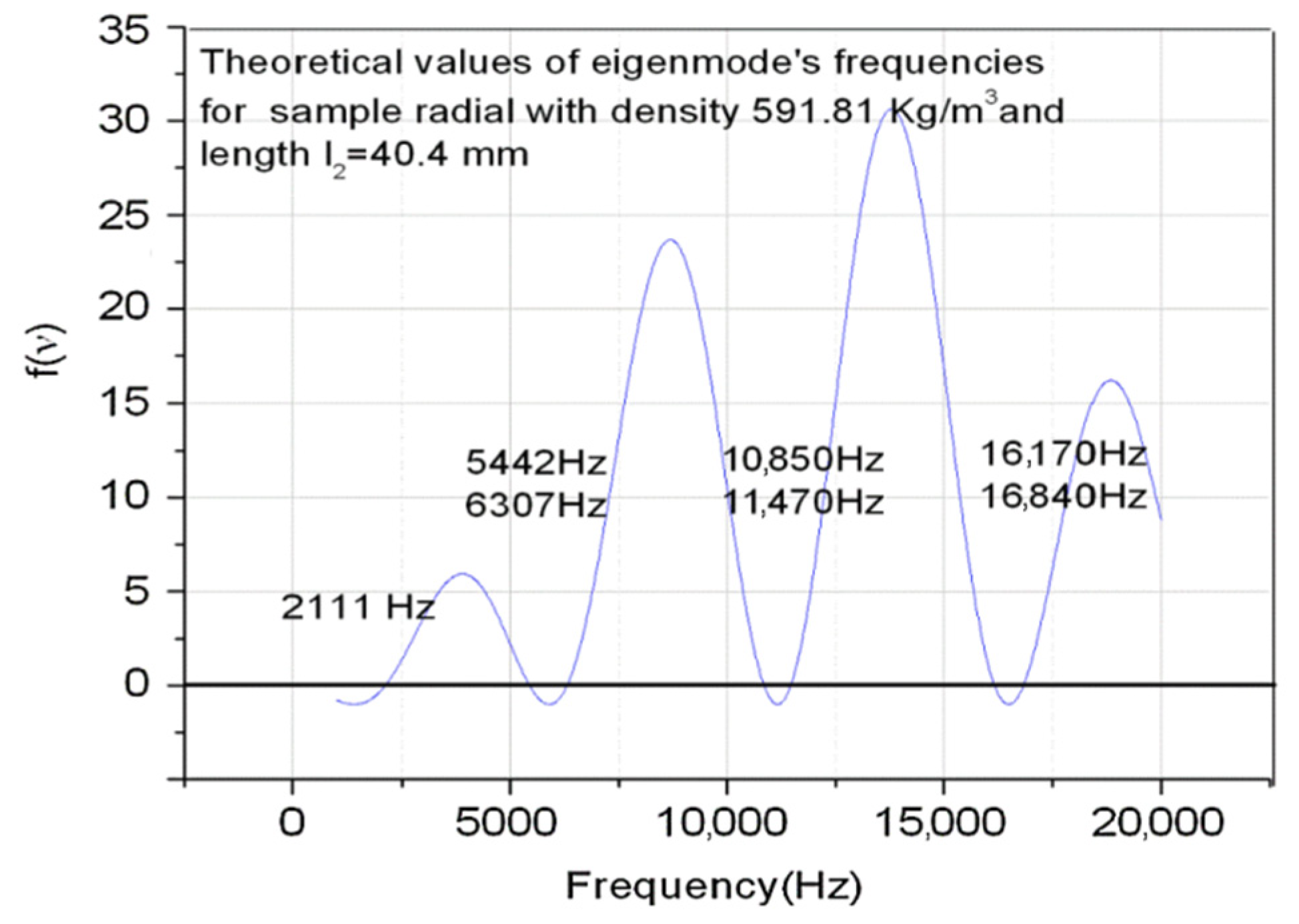
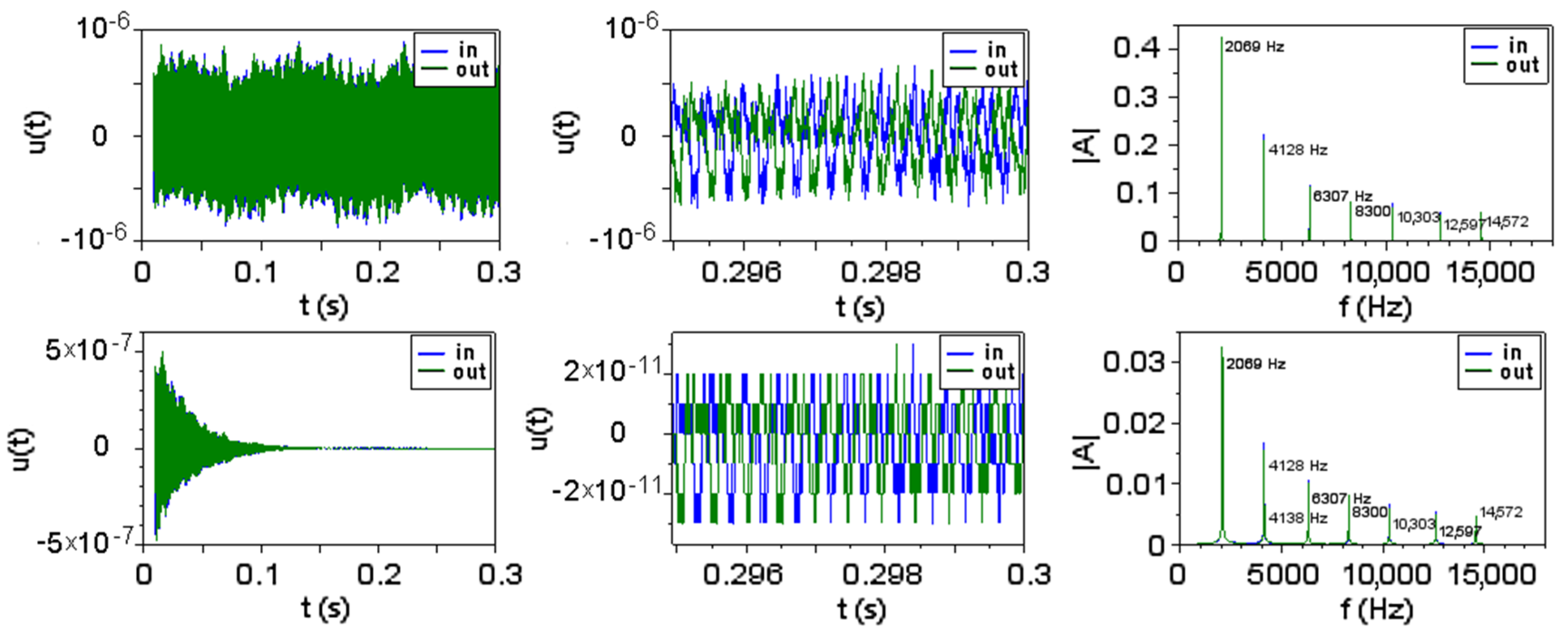
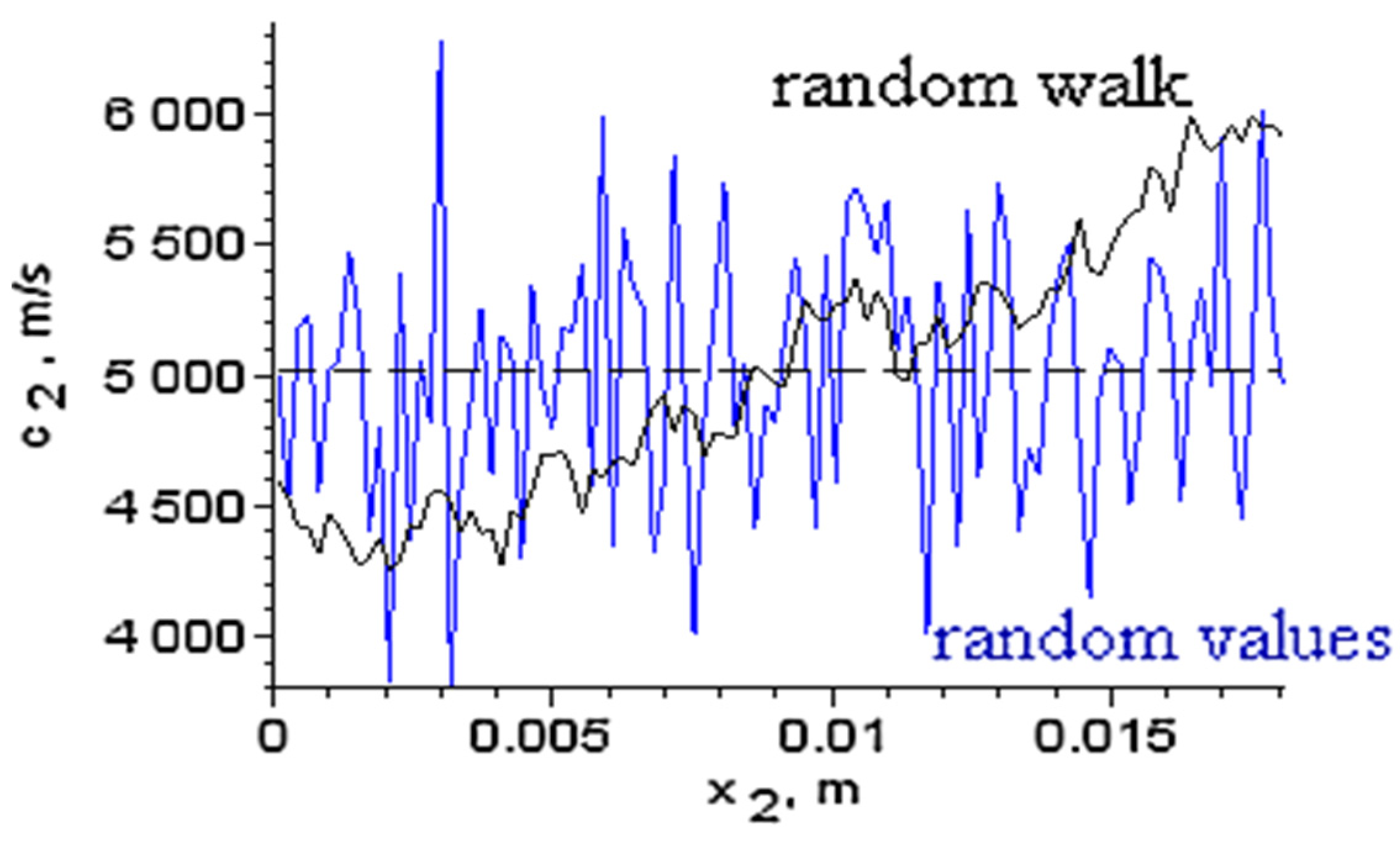
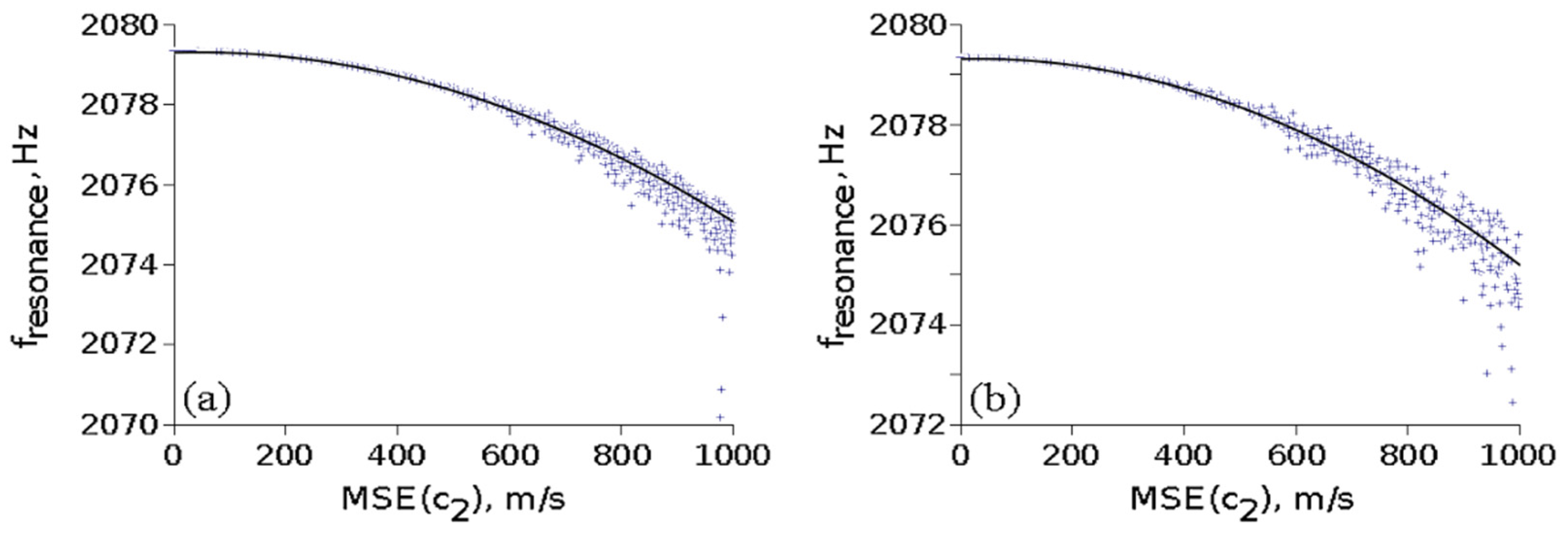

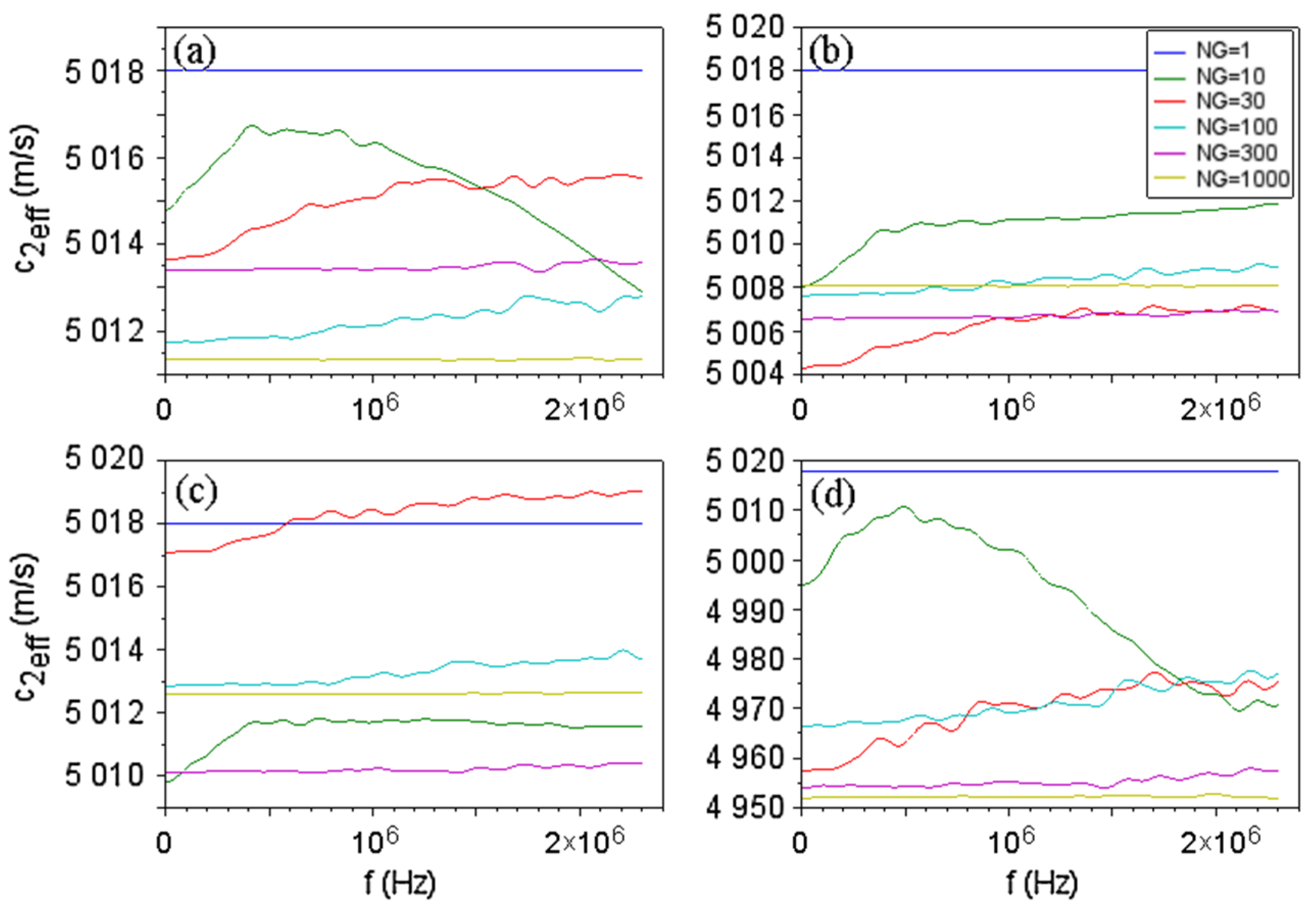
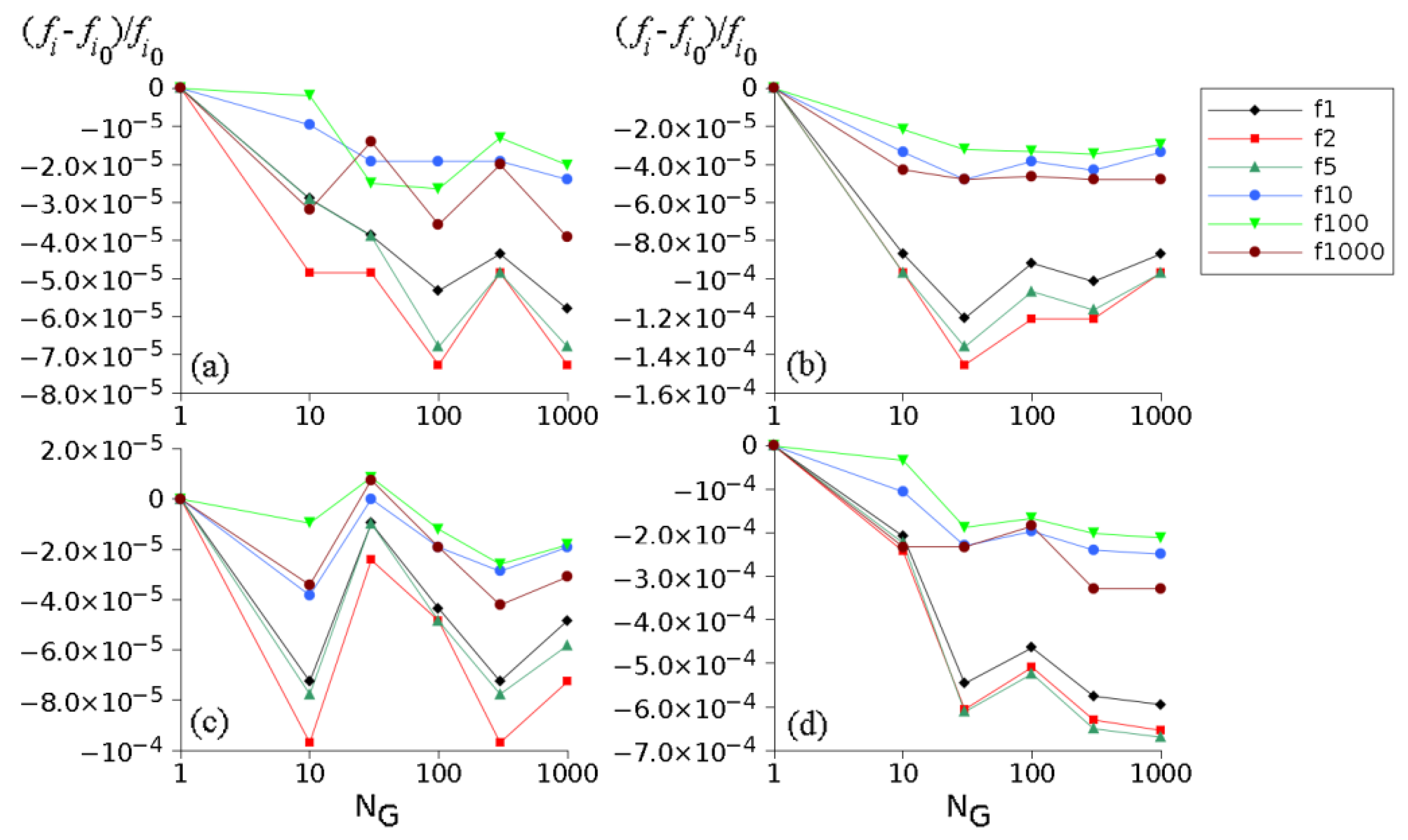
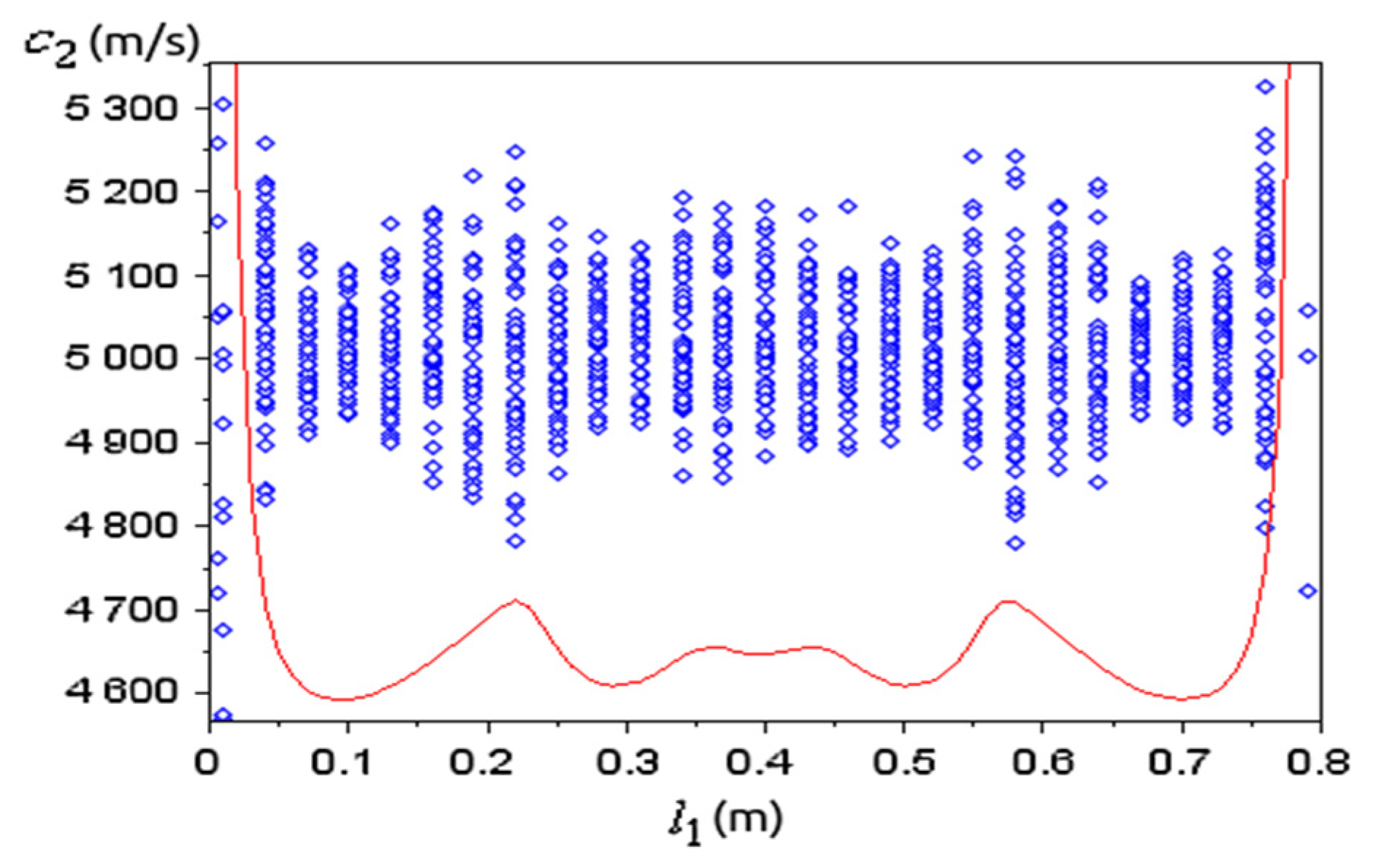
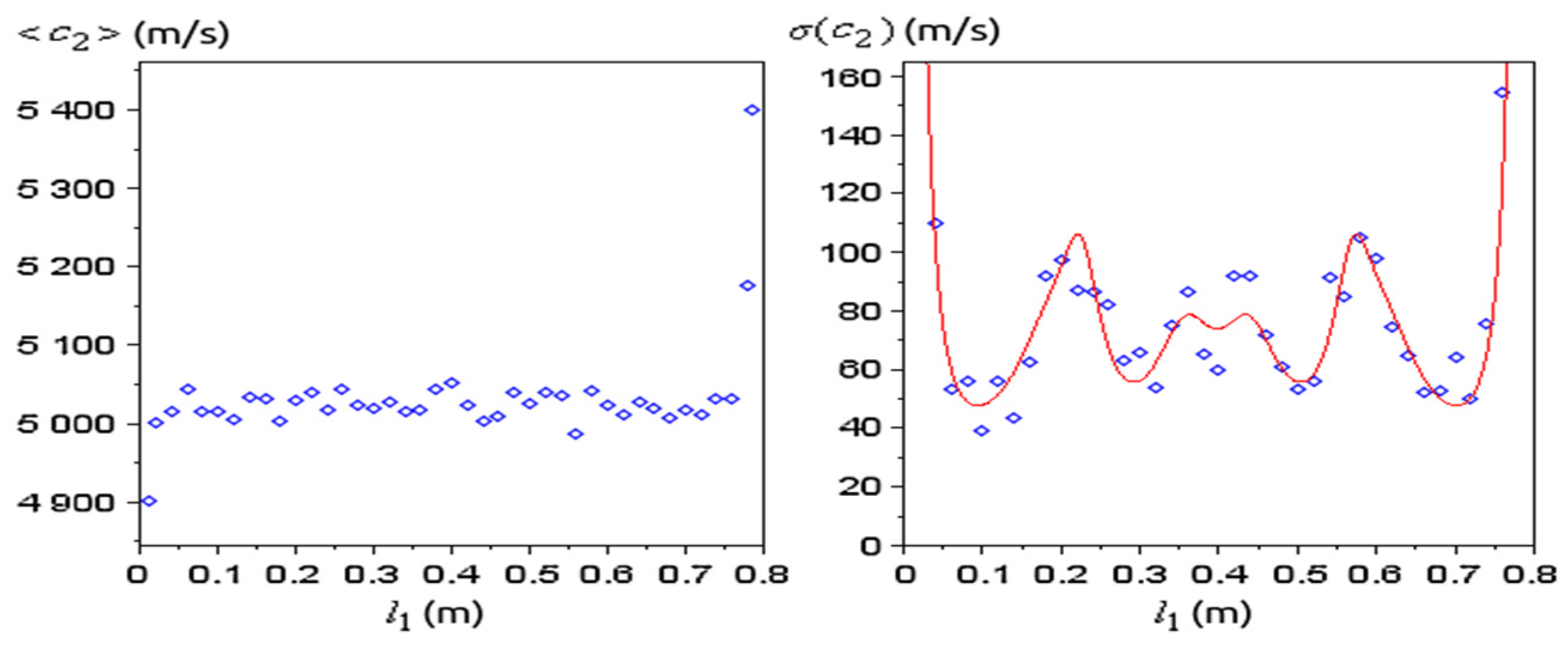
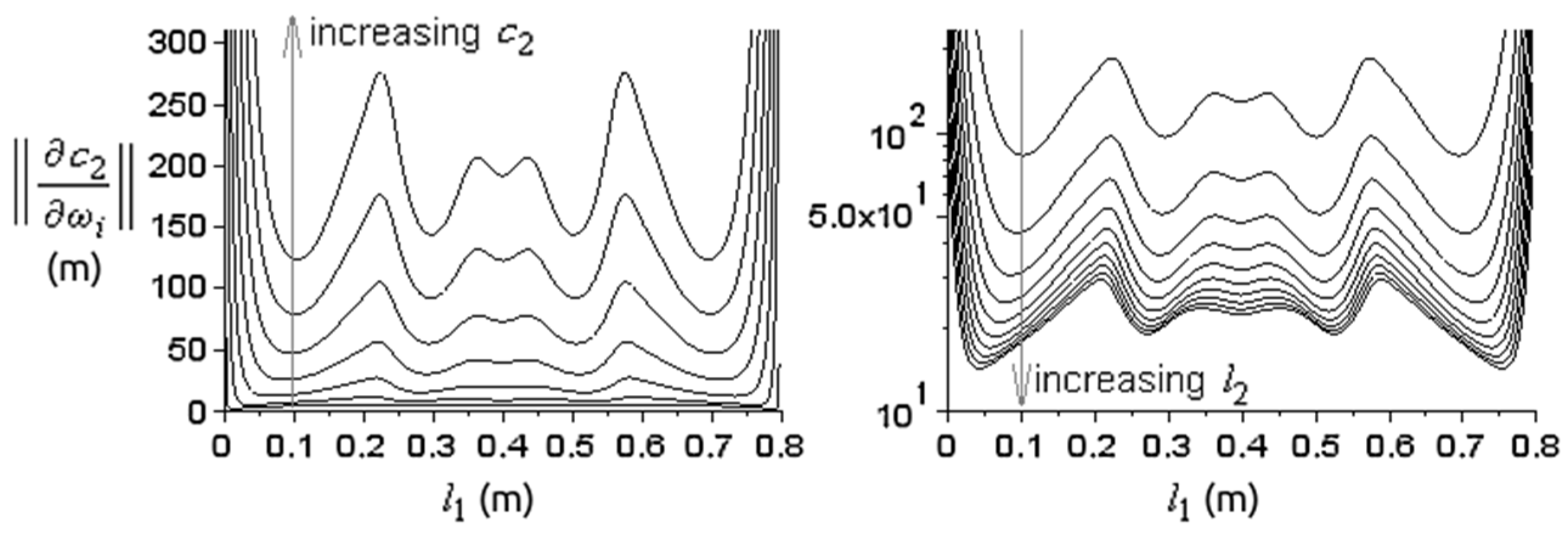
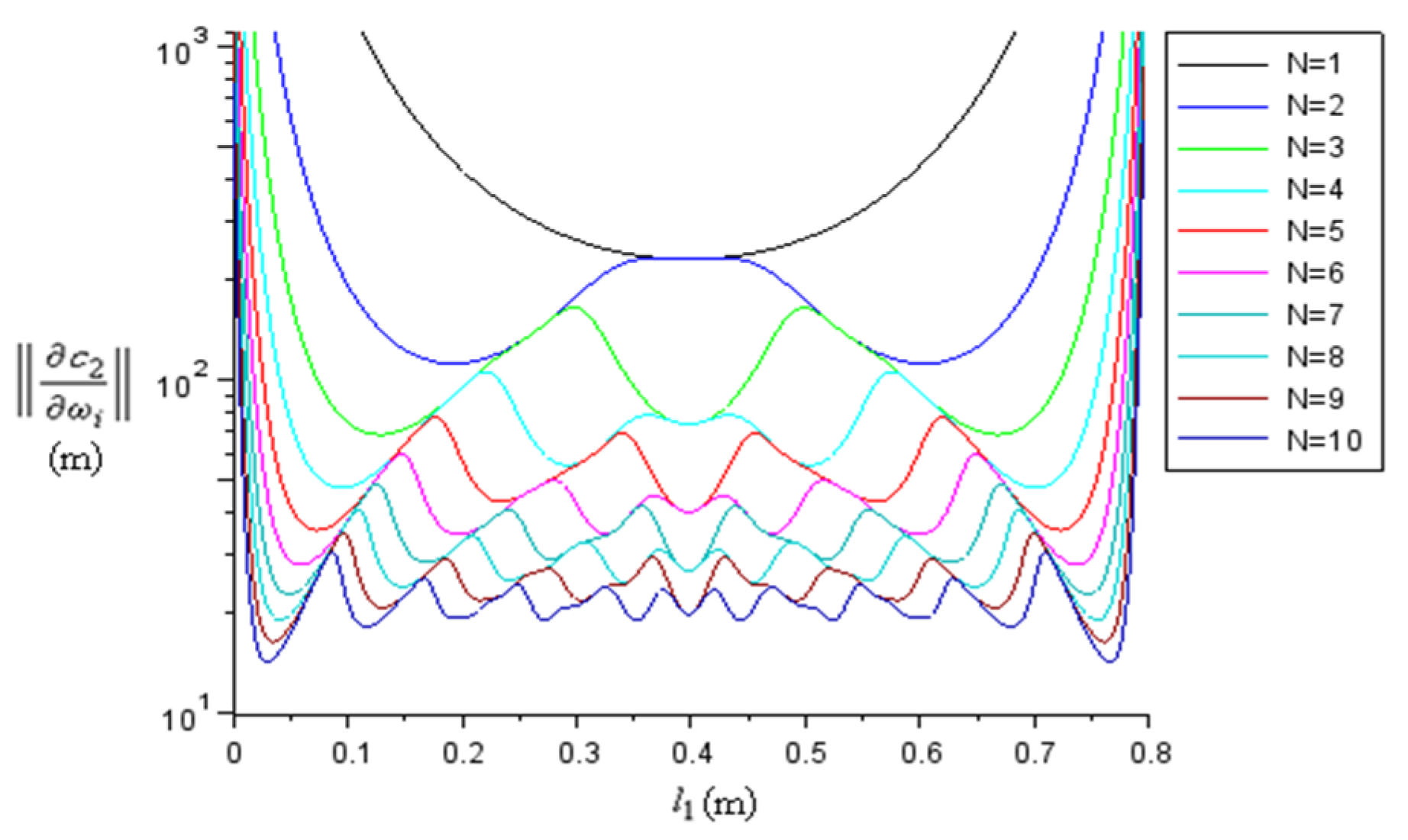

Publisher’s Note: MDPI stays neutral with regard to jurisdictional claims in published maps and institutional affiliations. |
© 2022 by the authors. Licensee MDPI, Basel, Switzerland. This article is an open access article distributed under the terms and conditions of the Creative Commons Attribution (CC BY) license (https://creativecommons.org/licenses/by/4.0/).
Share and Cite
Cretu, N.; Pop, M.-I.; Andia Prado, H.S. Some Theoretical and Experimental Extensions Based on the Properties of the Intrinsic Transfer Matrix. Materials 2022, 15, 519. https://doi.org/10.3390/ma15020519
Cretu N, Pop M-I, Andia Prado HS. Some Theoretical and Experimental Extensions Based on the Properties of the Intrinsic Transfer Matrix. Materials. 2022; 15(2):519. https://doi.org/10.3390/ma15020519
Chicago/Turabian StyleCretu, Nicolae, Mihail-Ioan Pop, and Hank Steve Andia Prado. 2022. "Some Theoretical and Experimental Extensions Based on the Properties of the Intrinsic Transfer Matrix" Materials 15, no. 2: 519. https://doi.org/10.3390/ma15020519
APA StyleCretu, N., Pop, M.-I., & Andia Prado, H. S. (2022). Some Theoretical and Experimental Extensions Based on the Properties of the Intrinsic Transfer Matrix. Materials, 15(2), 519. https://doi.org/10.3390/ma15020519






